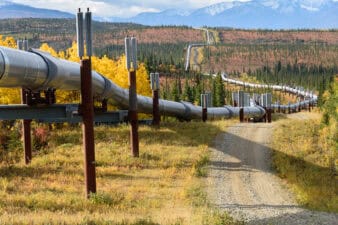On May 26th, Crescent Point Energy Corp. (TSX:CPG)(NYSE:CPG) announced a highly publicized purchase of Legacy Oil and Gas for a total consideration of $1.53 billion. The market was widely expecting Crescent Point to make an acquisition—likely in Saskatchewan—as the company pursues its acquisition-focused strategy, expands its presence in its core area of southeast Saskatchewan, and takes advantage of huge bargains present due to the recent oil collapse.
Crescent Point’s shares reacted unfavourably
Crescent Point’s acquisition of Legacy allows the company to add 22,000 boe/d of production, about three quarters of which originates from the extremely economic Midale light oil play in southeast Saskatchewan. This will not only be accretive to earnings, but will also expand Crescent Point’s drilling inventory with hundreds of high-return drilling locations.
Despite this, Crescent Point’s shares dropped on the news, indicating that shareholders may be concerned. One potential cause for concern is the fact that Crescent Point will be taking on nearly $1 billion in net debt.
Although this may seem like cause for concern, the acquisition will actually improve Crescent Point’s balance sheet. Here’s why.
The acquisition will not harm Crescent Point’s balance sheet
The total consideration for the Legacy purchase was $1.53 billion, but in reality, approximately $967 million of this was Legacy’s net debt. This means Crescent Point paid $563 million for the actual company, and also agreed to take on the company’s debt.
How is this nearly $1 billion in additional debt not harming Crescent Point’s balance sheet? The company is issuing an extensive amount of equity (which does have its own drawbacks). Crescent Point is paying for the purchase by issuing 18.97 million shares to Legacy shareholders at an exchange rate of 0.095 Crescent Point shares for every Legacy share. This means that Crescent Point is not utilizing their credit facilities or issuing debt to fund this portion of the purchase.
As for the $967 million in debt Crescent Point is acquiring, the company entered into a bought-deal agreement with financial institutions (whereby the group of institutions buy Crescent Point’s shares and issue them on their behalf), for a total of $600 million, or 21 million Crescent Point shares. This deal includes an over-allotment option of 3.1 million shares, or an additional $90 million.
The result is that Crescent Point could be issuing up to $690 million more in equity, on top of the approximately $560 million issued to Legacy shareholders. This $690 million will be used to reduce the $967 million of Legacy’s net debt. The end result is that Crescent Point will only be adding $277 million to their net debt. This would result in Crescent Point’s net debt increasing by 8%.
However, it’s important to note that after financing, total debt will only equal between 18% and 23% of the total consideration for the purchase. Currently, Crescent Point’s overall debt as a percentage of its total capitalization is about 22%, meaning that the new deal can actually lower Crescent Point’s overall indebtedness.
Most importantly, Crescent Point will not see any changes to the important debt-to-cash flow ratio, which is an important means of measuring leverage. Although Crescent Point may assume more debt, the extra production (most of which is highly profitable) will work to increase Crescent Point’s cash flow in excess of the debt acquired.
Should Crescent Point wish to further reduce debt, they also have the option of selling Legacy’s non-core plays (which includes assets in Alberta, North Dakota, and Manitoba—less than half of total land area), which would allow the company to focus on the highly economic southeast Saskatchewan assets.








